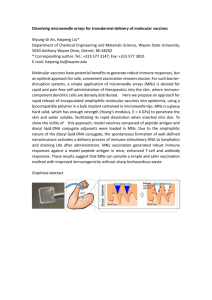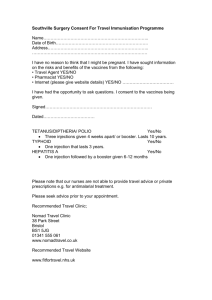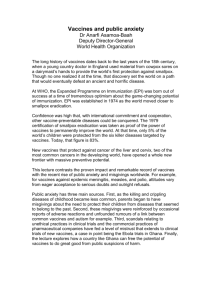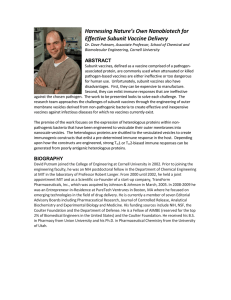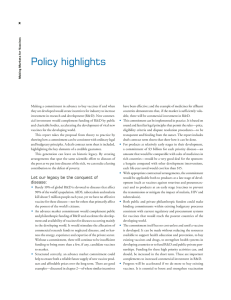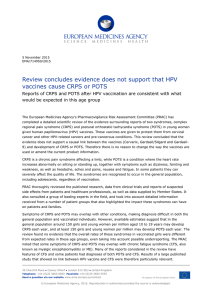Designing materials for next-generation vaccines and cancer immunotherapies Darrell Irvine, Ph.D.
advertisement
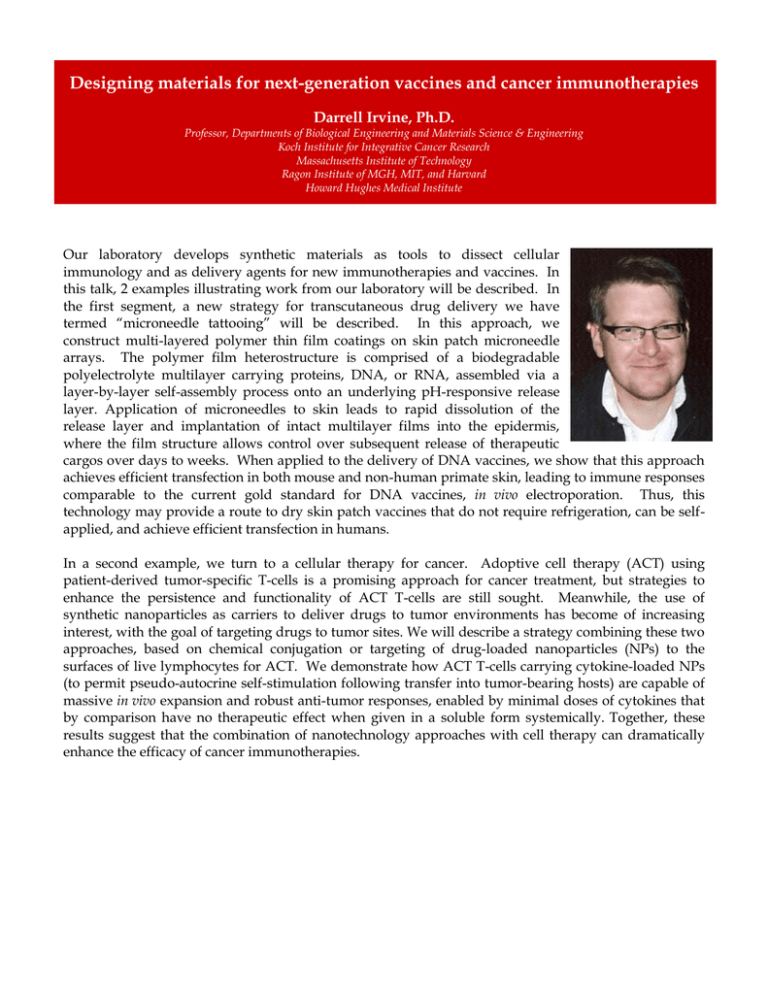
Designing materials for next-generation vaccines and cancer immunotherapies Darrell Irvine, Ph.D. Professor, Departments of Biological Engineering and Materials Science & Engineering Koch Institute for Integrative Cancer Research Massachusetts Institute of Technology Ragon Institute of MGH, MIT, and Harvard Howard Hughes Medical Institute Our laboratory develops synthetic materials as tools to dissect cellular immunology and as delivery agents for new immunotherapies and vaccines. In this talk, 2 examples illustrating work from our laboratory will be described. In the first segment, a new strategy for transcutaneous drug delivery we have termed “microneedle tattooing” will be described. In this approach, we construct multi-layered polymer thin film coatings on skin patch microneedle arrays. The polymer film heterostructure is comprised of a biodegradable polyelectrolyte multilayer carrying proteins, DNA, or RNA, assembled via a layer-by-layer self-assembly process onto an underlying pH-responsive release layer. Application of microneedles to skin leads to rapid dissolution of the release layer and implantation of intact multilayer films into the epidermis, where the film structure allows control over subsequent release of therapeutic cargos over days to weeks. When applied to the delivery of DNA vaccines, we show that this approach achieves efficient transfection in both mouse and non-human primate skin, leading to immune responses comparable to the current gold standard for DNA vaccines, in vivo electroporation. Thus, this technology may provide a route to dry skin patch vaccines that do not require refrigeration, can be selfapplied, and achieve efficient transfection in humans. In a second example, we turn to a cellular therapy for cancer. Adoptive cell therapy (ACT) using patient-derived tumor-specific T-cells is a promising approach for cancer treatment, but strategies to enhance the persistence and functionality of ACT T-cells are still sought. Meanwhile, the use of synthetic nanoparticles as carriers to deliver drugs to tumor environments has become of increasing interest, with the goal of targeting drugs to tumor sites. We will describe a strategy combining these two approaches, based on chemical conjugation or targeting of drug-loaded nanoparticles (NPs) to the surfaces of live lymphocytes for ACT. We demonstrate how ACT T-cells carrying cytokine-loaded NPs (to permit pseudo-autocrine self-stimulation following transfer into tumor-bearing hosts) are capable of massive in vivo expansion and robust anti-tumor responses, enabled by minimal doses of cytokines that by comparison have no therapeutic effect when given in a soluble form systemically. Together, these results suggest that the combination of nanotechnology approaches with cell therapy can dramatically enhance the efficacy of cancer immunotherapies.


